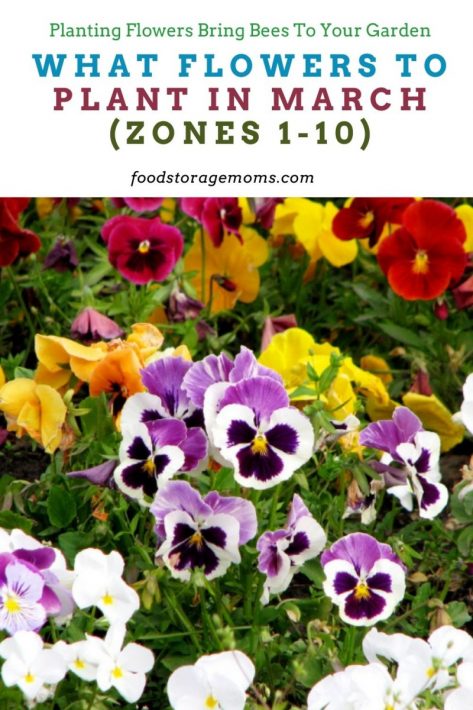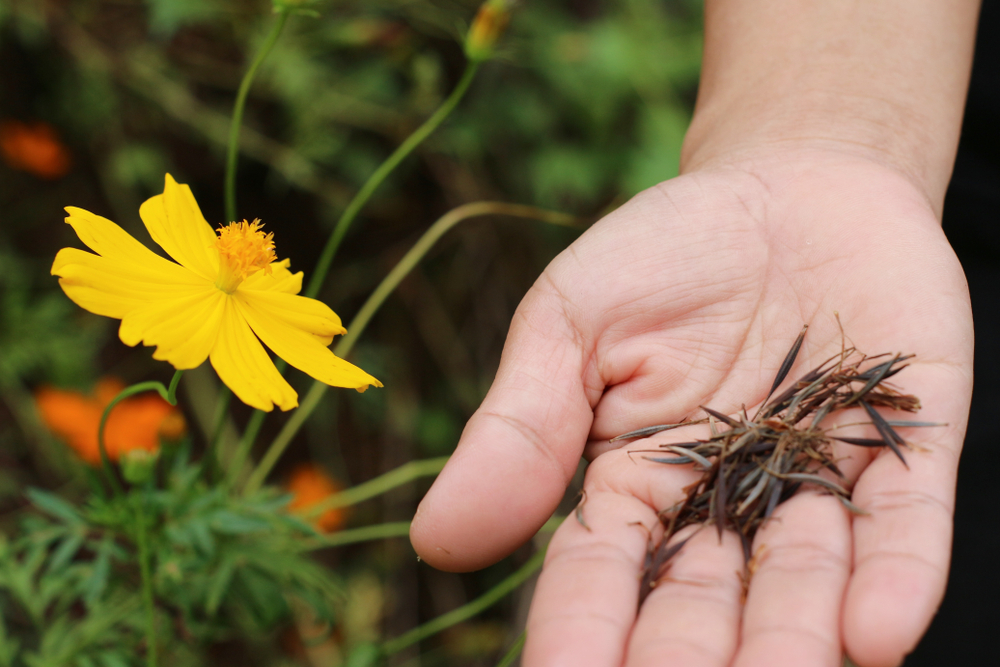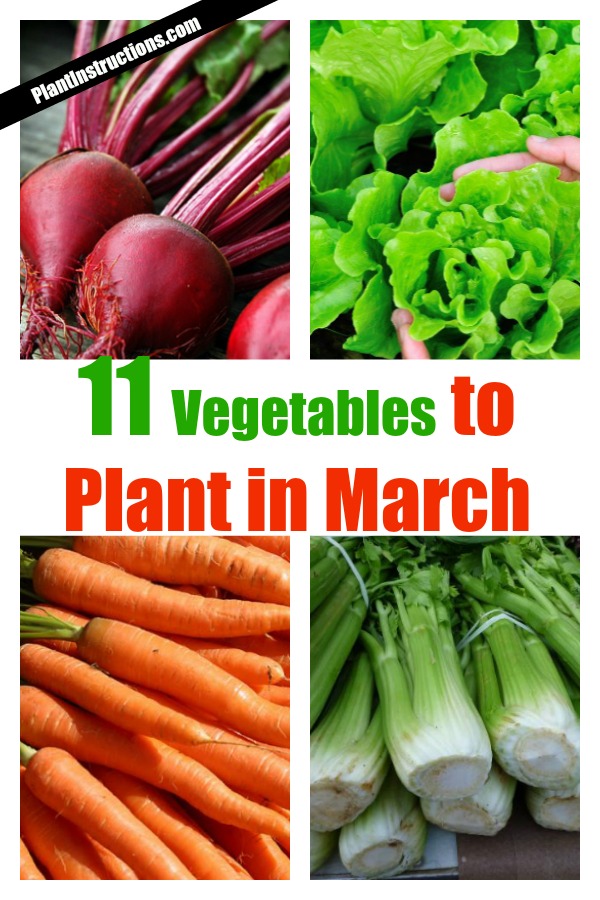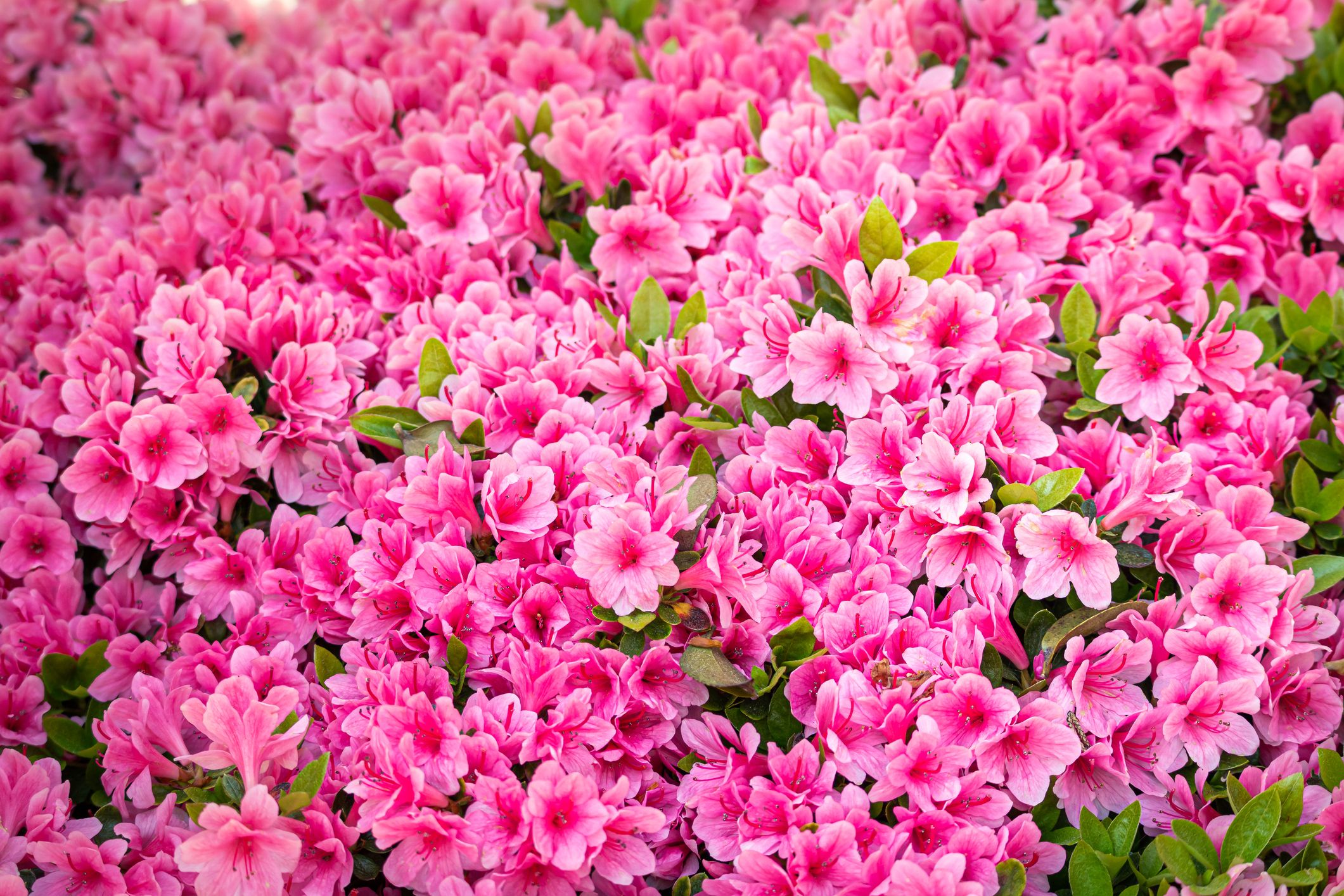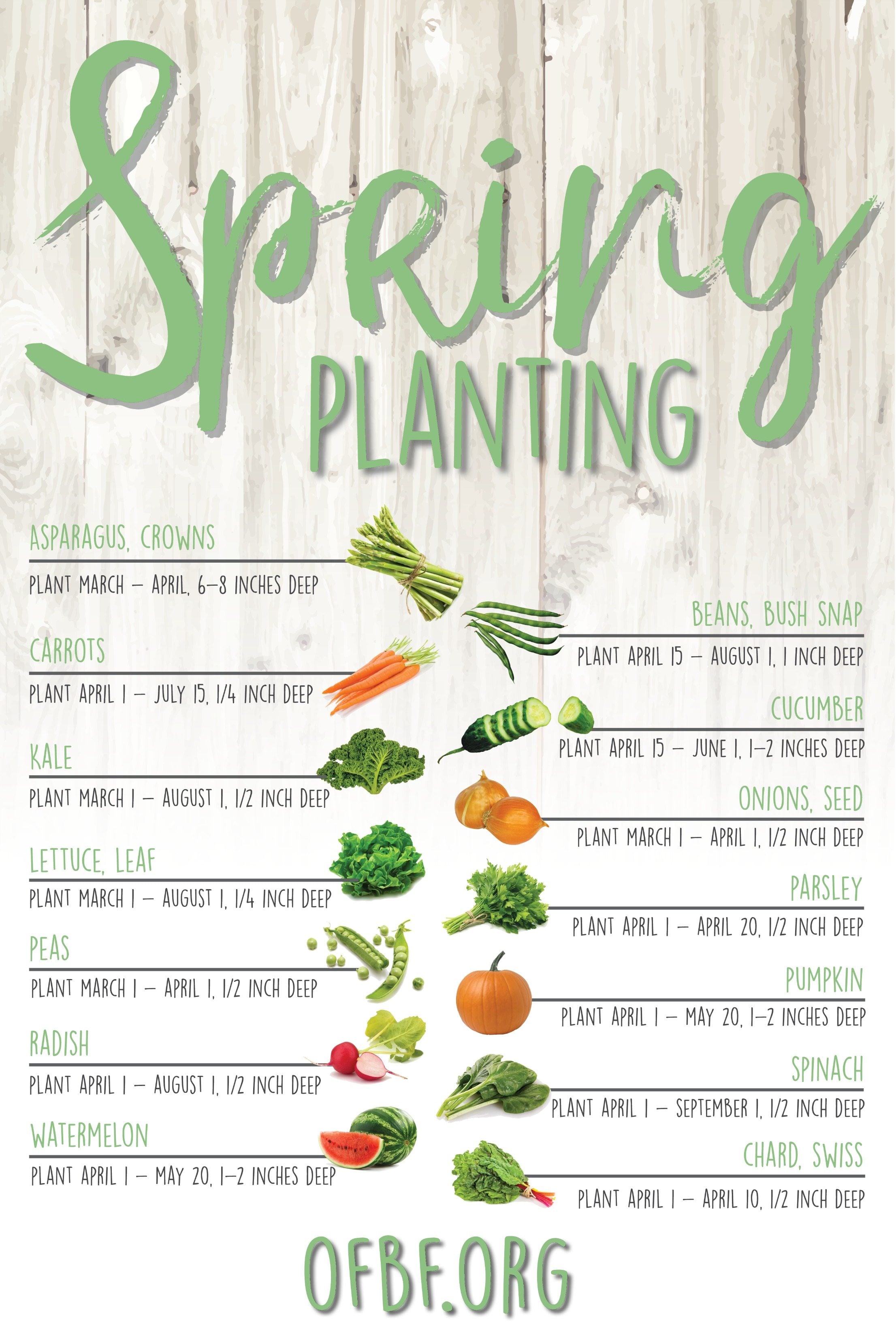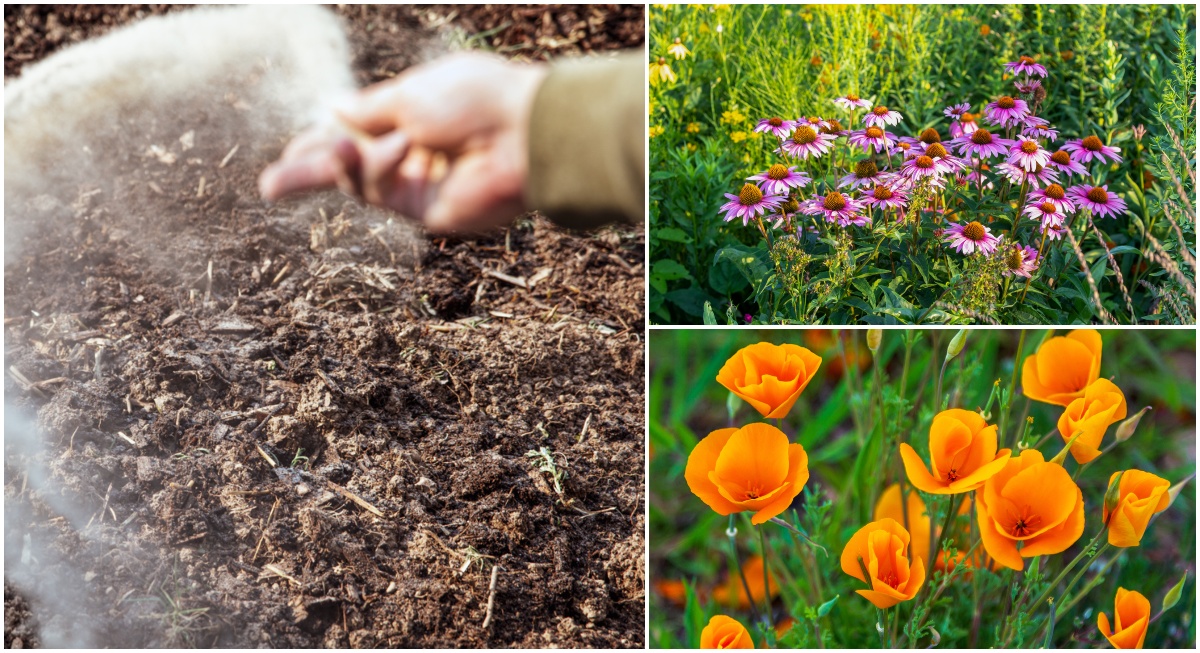Welcoming Spring with Vibrant Blooms
As the last wisps of winter’s chill dissipate, gardeners eagerly anticipate the arrival of spring. This season of renewal offers a fresh start for cultivating a stunning display of colors and fragrances in the garden. One of the most exciting aspects of spring gardening is planting flower seeds in March, which sets the stage for a vibrant and thriving garden. By selecting the right flower seeds to plant in March, gardeners can create a breathtaking tapestry of blooms that will attract pollinators, add visual interest, and fill the air with sweet scents.
March is an ideal time to plant flower seeds, as the soil has begun to warm up, and the risk of frost has decreased. This allows seeds to germinate and grow rapidly, producing a profusion of blooms in a relatively short period. Whether you’re a seasoned gardener or a beginner, planting flower seeds in March is a great way to get a head start on the growing season and enjoy the many benefits of gardening.
From the delicate petals of pansies to the vibrant hues of snapdragons, the variety of flower seeds to plant in March is vast and exciting. By choosing the right seeds for your climate, soil type, and amount of sunlight, you can create a garden that is not only beautiful but also resilient and low-maintenance. In the following sections, we’ll explore the top picks for March flower seeds, expert tips for sowing and caring for your plants, and common mistakes to avoid when planting in March.
Choosing the Right Seeds for a Thriving Garden
When it comes to selecting flower seeds to plant in March, it’s essential to choose high-quality seeds that are suitable for the March planting season. This ensures that your garden will thrive and produce a stunning display of colors and fragrances. To make the right choice, consider the specific climate, soil type, and sunlight requirements of your garden.
Climate is a critical factor in determining which flower seeds to plant in March. If you live in an area with a cool and wet climate, choose seeds that are resistant to frost and can tolerate moist soil. On the other hand, if you live in a region with a warm and dry climate, select seeds that are drought-tolerant and can thrive in full sun.
Soil type is another important consideration when selecting flower seeds to plant in March. If your soil is heavy clay, choose seeds that prefer moist soil and can tolerate poor drainage. If your soil is sandy, select seeds that prefer well-draining soil and can tolerate dry conditions.
Sunlight requirements are also crucial when selecting flower seeds to plant in March. If your garden receives full sun, choose seeds that prefer at least six hours of direct sunlight per day. If your garden receives partial shade, select seeds that prefer four to six hours of indirect sunlight per day.
By considering these factors, you can choose the right flower seeds to plant in March and create a thriving garden that will bloom beautifully throughout the season.
How to Prepare Your Garden for March Planting
Before planting flower seeds in March, it’s essential to prepare your garden to ensure optimal growth and blooming. This involves several steps that will create a conducive environment for seed germination and growth.
Soil preparation is a critical step in preparing your garden for March planting. Start by removing any winter debris, such as dead leaves and branches, from the garden bed. Then, loosen the soil to a depth of about 8-10 inches to improve drainage and aeration. If your soil is heavy clay or sandy, mix in some organic matter like compost or well-rotted manure to improve its structure.
Next, remove any weeds that may be competing with your flower seeds for water and nutrients. You can use a hoe or hand weeder to remove weeds, or apply a pre-emergent herbicide to prevent them from germinating.
After preparing the soil, create a conducive environment for seed germination by providing adequate moisture and warmth. Water the soil gently but thoroughly, and then cover it with a thin layer of mulch to retain moisture and regulate soil temperature.
Finally, check the pH level of your soil and adjust it if necessary. Most flower seeds prefer a slightly acidic to neutral soil pH, ranging from 6.0 to 7.0. You can use a soil testing kit to determine your soil’s pH level and adjust it accordingly.
By following these steps, you can create a well-prepared garden that will support the growth and blooming of your flower seeds to plant in March.
Top 5 Flower Seeds to Plant in March for a Stunning Display
When it comes to selecting the best flower seeds to plant in March, there are many options to choose from. Here are the top 5 flower seeds to plant in March, including popular varieties like pansies, violas, and snapdragons.
1. Pansies – These colorful flowers are a great choice for March planting, as they thrive in cooler temperatures and can tolerate light frosts. They come in a variety of colors, including pink, purple, yellow, and white, and have a delicate, velvety texture.
2. Violas – Violas are another popular choice for March planting, as they are easy to grow and require minimal maintenance. They have delicate, heart-shaped flowers in a range of colors, including purple, yellow, and white, and are perfect for adding a touch of elegance to any garden.
3. Snapdragons – Snapdragons are a great choice for March planting, as they are tall and stately, and can add a dramatic touch to any garden. They come in a range of colors, including yellow, orange, red, and white, and have a unique, dragon-shaped flower head.
4. Daffodils – Daffodils are a classic spring-blooming flower that are perfect for March planting. They have bright yellow or white flowers with a distinctive trumpet shape, and are a great choice for adding a splash of color to any garden.
5. Tulips – Tulips are a popular choice for March planting, as they are easy to grow and come in a wide range of colors, including red, pink, yellow, and white. They have cup-shaped flowers with three petals and three sepals, and are a great choice for adding a touch of elegance to any garden.
These top 5 flower seeds to plant in March are sure to add a stunning display of color and beauty to any garden. By choosing the right seeds for your climate and soil type, you can create a thriving and vibrant garden that will bloom beautifully throughout the season.
Expert Tips for Sowing Seeds in March
When it comes to sowing flower seeds in March, there are several expert tips to keep in mind to ensure optimal growth and blooming. By following these tips, you can give your seeds the best possible start and enjoy a stunning display of colors and fragrances in your garden.
Optimal Sowing Depths: The sowing depth of your flower seeds will depend on the specific variety, but a general rule of thumb is to sow seeds at a depth of 2-3 times their diameter. This will ensure that the seeds are planted at the correct depth and will receive the right amount of moisture and light.
Spacing: The spacing of your flower seeds will also depend on the specific variety, but a general rule of thumb is to sow seeds 1-2 inches apart. This will give the seeds enough room to grow and receive adequate air circulation, which is essential for healthy growth and blooming.
Watering Techniques: When it comes to watering your flower seeds in March, it’s essential to keep the soil consistently moist but not waterlogged. A good rule of thumb is to water the seeds gently but thoroughly, and then allow the soil to dry slightly between waterings.
Following Seed Package Instructions: It’s essential to follow the instructions on the seed package for specific sowing instructions, as different varieties may have unique requirements. By following these instructions, you can ensure that your seeds are sown correctly and will receive the best possible start.
Additional Tips: In addition to these expert tips, there are several other things to keep in mind when sowing flower seeds in March. Make sure to choose a location that receives the right amount of sunlight and has well-draining soil. Also, be sure to keep the soil consistently moist but not waterlogged, as this can lead to root rot and other problems.
By following these expert tips and additional guidelines, you can give your flower seeds the best possible start and enjoy a stunning display of colors and fragrances in your garden. Whether you’re a seasoned gardener or just starting out, sowing flower seeds in March is a great way to get a head start on the growing season and enjoy the beauty of nature.
Common Mistakes to Avoid When Planting in March
When planting flower seeds in March, there are several common mistakes to avoid in order to ensure a successful and thriving garden. By being aware of these potential pitfalls, you can take steps to prevent them and enjoy a stunning display of colors and fragrances in your garden.
Planting Too Early or Too Late: One of the most common mistakes to avoid when planting flower seeds in March is planting too early or too late. If you plant too early, the seeds may be exposed to frost or cold temperatures, which can damage or kill them. On the other hand, if you plant too late, the seeds may not have enough time to germinate and bloom before the weather becomes too hot.
Inadequate Soil Preparation: Another common mistake to avoid when planting flower seeds in March is inadequate soil preparation. If the soil is not properly prepared, it may not provide the necessary nutrients and support for the seeds to germinate and grow. Make sure to test the pH level of your soil and amend it if necessary, and also add organic matter such as compost or manure to improve soil fertility and drainage.
Insufficient Watering: Insufficient watering is another common mistake to avoid when planting flower seeds in March. If the soil is too dry, the seeds may not germinate or may struggle to grow. Make sure to water the seeds gently but thoroughly, and keep the soil consistently moist but not waterlogged.
Not Following Seed Package Instructions: Finally, not following the instructions on the seed package is another common mistake to avoid when planting flower seeds in March. Each type of flower seed has its own unique requirements, and following the instructions on the package can help ensure that the seeds are sown correctly and receive the best possible start.
By avoiding these common mistakes, you can help ensure a successful and thriving garden when planting flower seeds in March. Remember to plant at the right time, prepare the soil properly, water sufficiently, and follow the instructions on the seed package.
Caring for Your March-Planted Flowers
Once your March-planted flowers have germinated and started to grow, it’s essential to provide them with the right care to ensure they thrive and bloom beautifully. Here are some tips on caring for your March-planted flowers, including fertilization, pruning, and pest management.
Fertilization: To promote healthy growth and blooming, fertilize your March-planted flowers with a balanced fertilizer once a month. You can also use a fertilizer specifically formulated for flowers, which will provide the necessary nutrients for blooming.
Pruning: Pruning is an essential part of caring for your March-planted flowers. Remove any dead or damaged leaves or stems, and trim back overgrown plants to maintain shape and promote new growth. Pruning will also help to encourage blooming and prevent the plants from becoming leggy.
Pest Management: Keep an eye out for pests such as aphids, whiteflies, and spider mites, which can damage your March-planted flowers. Use organic pest control methods whenever possible, such as neem oil or insecticidal soap, to minimize harm to the environment and your plants.
Monitoring Weather Conditions: March weather can be unpredictable, with sudden changes in temperature and precipitation. Monitor the weather forecast and adjust your care accordingly. If a frost is predicted, cover your plants with a frost blanket or bring them indoors to protect them from damage.
Adjusting Care: As the weather warms up in March, adjust your care accordingly. Increase watering as the plants grow and require more moisture, and reduce fertilization as the plants approach blooming. By adjusting your care to the changing weather conditions, you can ensure your March-planted flowers thrive and bloom beautifully.
By following these tips on caring for your March-planted flowers, you can enjoy a stunning display of colors and fragrances in your garden. Remember to fertilize, prune, and monitor weather conditions to ensure your flowers receive the best possible care.
Enjoying the Fruits of Your Labor: March-Planted Flowers in Bloom
There’s nothing quite like the joy of witnessing March-planted flowers in bloom. After weeks of careful planning, preparation, and nurturing, your hard work finally pays off as your flowers burst into vibrant colors and fragrances. The sense of accomplishment and pride you’ll feel as you gaze upon your thriving garden is truly unbeatable.
As you enjoy the fruits of your labor, take a moment to appreciate the beauty and wonder of nature. Watch as bees and butterflies flit from flower to flower, collecting nectar and pollen. Listen to the sweet songs of birds as they visit your garden, and feel the warmth of the sun on your skin as you bask in the beauty of your blooming flowers.
Don’t be afraid to share your experiences and photos of your thriving garden with friends and family. Whether you’re a seasoned gardener or a beginner, the sense of community and connection that comes from sharing your passion with others is a valuable part of the gardening experience.
As you enjoy the beauty of your March-planted flowers, remember that gardening is a journey, not a destination. There will be ups and downs, triumphs and setbacks, but with patience, persistence, and a willingness to learn, you can create a stunning display of colors and fragrances that will bring joy and beauty to your life for months to come.
So go ahead, take a step back, and admire your handiwork. You’ve earned it Your March-planted flowers are a testament to your hard work and dedication, and they’re sure to bring a smile to your face and a sense of wonder to your heart.


